AMD Kaveri Review: A8-7600 and A10-7850K Tested
by Ian Cutress & Rahul Garg on January 14, 2014 8:00 AM ESTDrawing Performance Conclusions
As I progressed through the testing for this review, I became aware of trends in two things: absolute performance, in terms of numbers, and generational improvements across platforms. With AMD moving the Bulldozer based architectures from Piledriver in Trinity and Richland to Steamroller in Kaveri, the base CPU design has had a relatively long run in order to be optimized to the limitations on the CPU side. Obviously AMD has also had a chance to change the lithography node in there as well, and as such has optimized for design rather than performance. This matters a great deal when we look at the power banding (45W, 65W, 95W) and performance in each segment.
In order to display just how much Kaveri has grown in relation to the previous generations, I processed our mountain of data to show graphs where percentage gain against the older generations really does matter. As mentioned previously in this review, it all depends on whether the software can take advantage of the new features afforded by the architecture. In this review we have spent a lot of time discussing advantages for Kaveri in terms of compute (HSA, hUMA, hQ) and gaming (Mantle, TrueAudio), but some of these are still a little way off for software integration. So what does that translate to if you are looking for an APU today – does Kaveri still expand its wings with the integration of the GCN architecture, or does it lag behind due to the lithography node no longer being optimized for frequency. The proof is in the results.
IGP Gaming, 1280x1024
For the 100W APUs at 1280x1024, there is almost no movement between the Richland and the Kaveri APUs, except for Company of Heroes which would seem to leverage the extra SPs more than the MHz available.
45W APUs are clearly in vogue at 1280x1024, each of them providing a good bump over Richland.
IGP Gaming, 1680x1050
1680x1050 sees more benefit for the 100W APUs, but the 45W APUs still show big leaps.
IGP Gaming, 1920x1080
At 1080p the effects are more pronounced all around.
CPU Timed Benchmarks
Unfortunately the CPU timed benchmarks at 100W are bit over the place. Here we are dealing with an IPC gain but MHz deficit, and each benchmark has a different way of dealing with it. For Agisoft, MHz wins, but for Xilisoft, the Kaveri improvements work out well for the system.
At 45W the situation is a lot more clearer, and the newer APUs have the advantage, especially in Adobe After Effects.
CPU Score Benchmarks
45W still makes the biggest jump when it comes to score based CPU benchmarks.
IGP Synthetics
I never like putting much thought into the synthetic results – here both the 100W and the 45W range are showing good improvements all around. 3DMark 06 has the most trouble getting improvements as it relies more on the grunt, rather than the features that Kaveri affords.
IGP Compute
Off the bat we can see just how much of a difference the Kaveri GPU Compute can make over previous APUs. This is still without hUMA fully being in effect while we wait for a proper driver and software stack to become available.
Up to a +222% boost from Kaveri is amazing for a 45W part.
AMD vs Intel
For a little tete-a-tete, putting the 65W Iris Pro up against the 65W Kaveri seems like a good idea. To add to the mix, due to the extreme price difference of Iris Pro in this equation, we also add the 95 W Kaveri for comparison.
It is interesting to note that at the lower resolutions the Iris Pro wins on most benchmarks, but when the resolution and complexity is turned up, especially in Sleeping Dogs, the Kaveri APUs are in the lead.


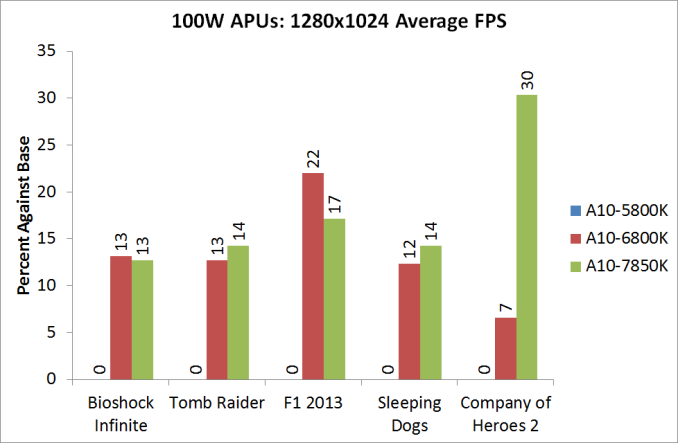
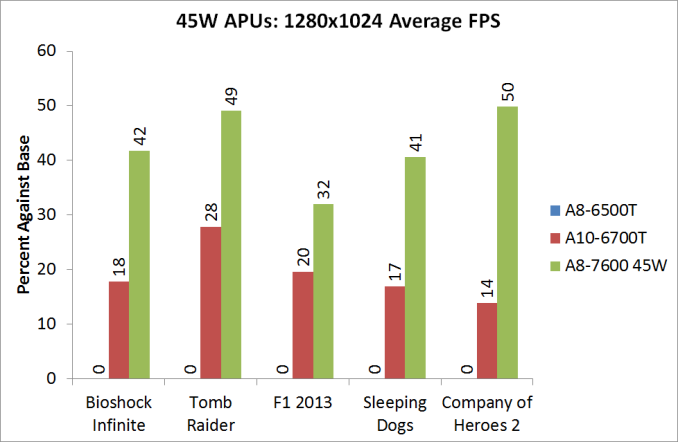
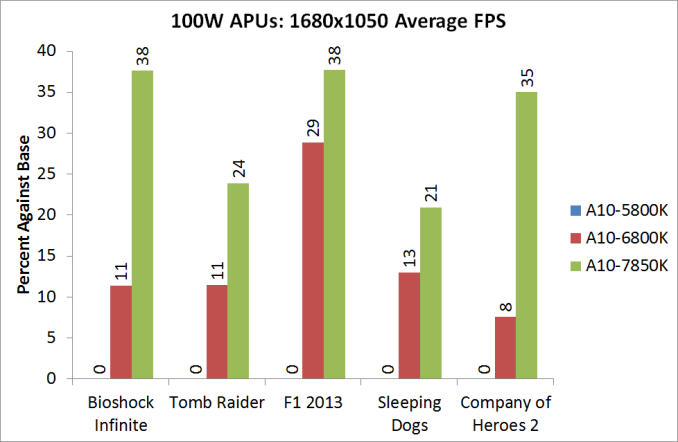
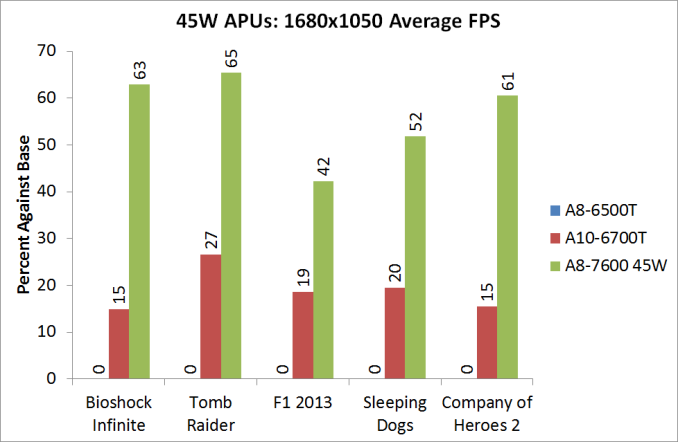
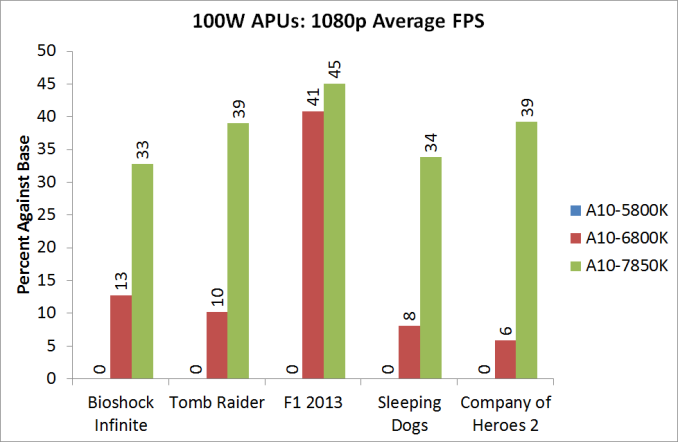

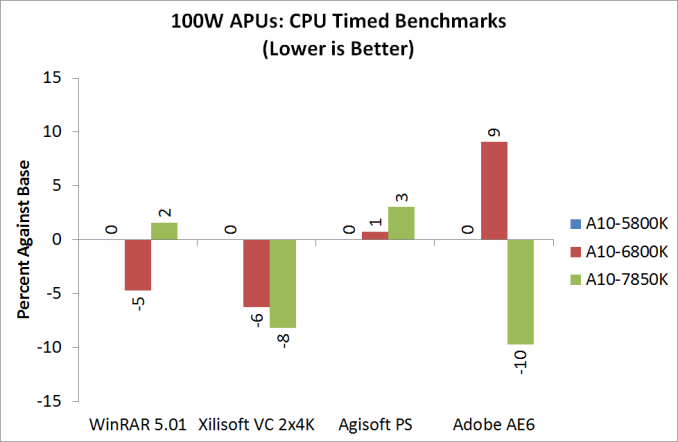
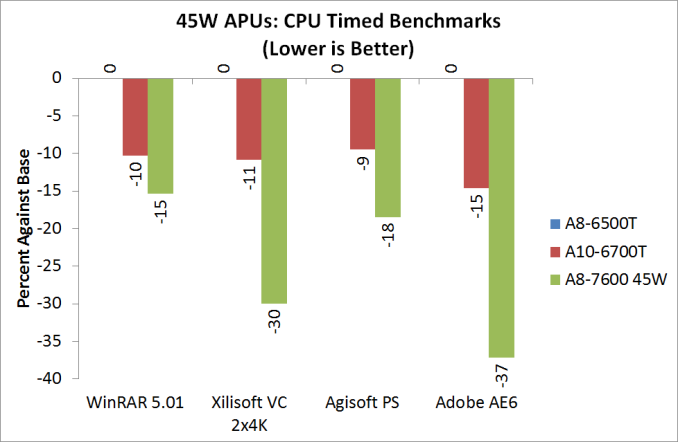

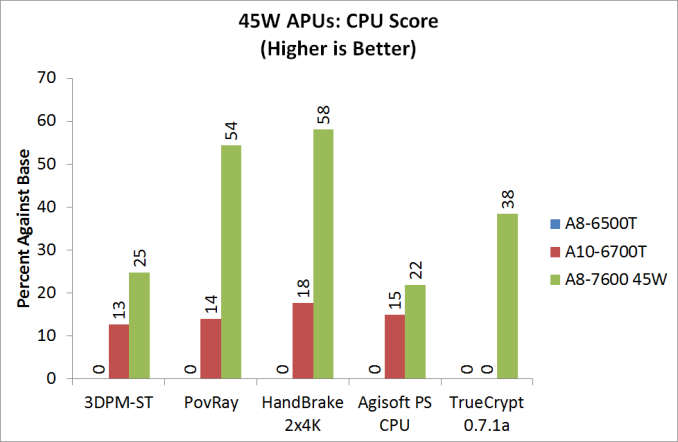
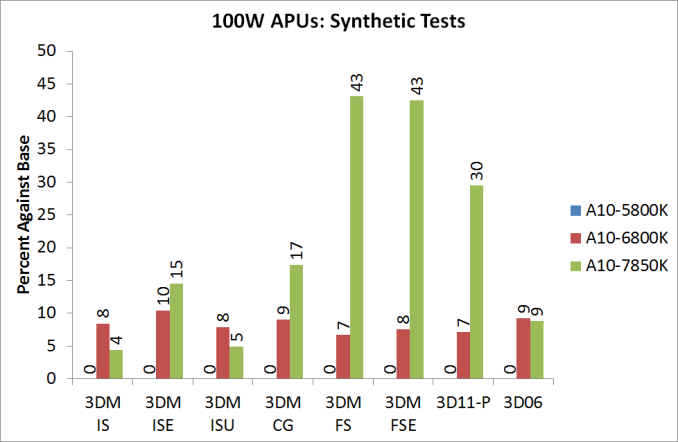
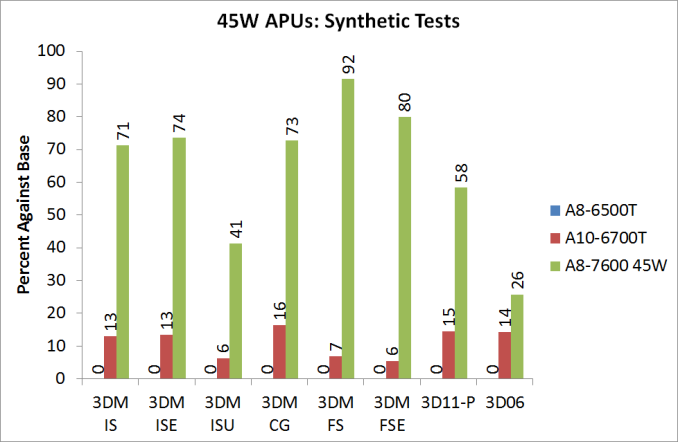
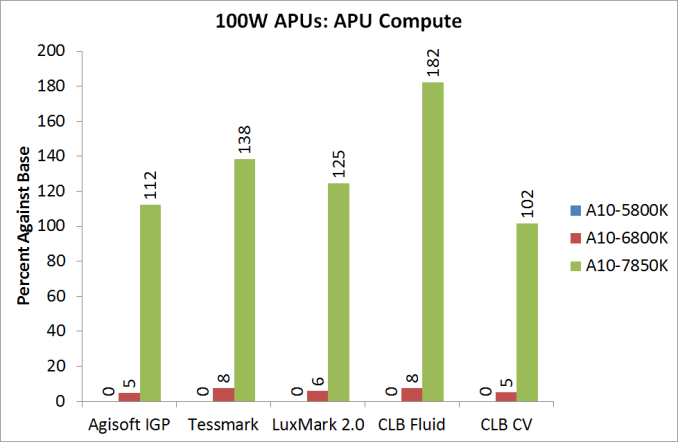

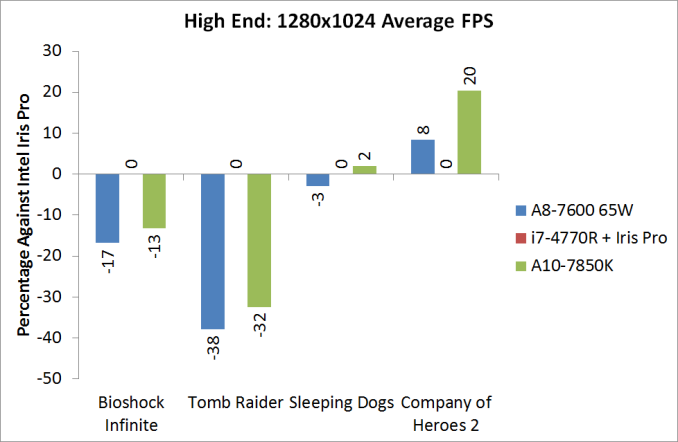
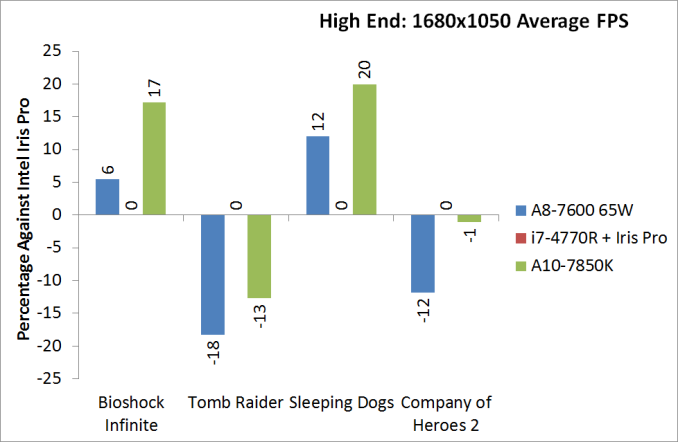
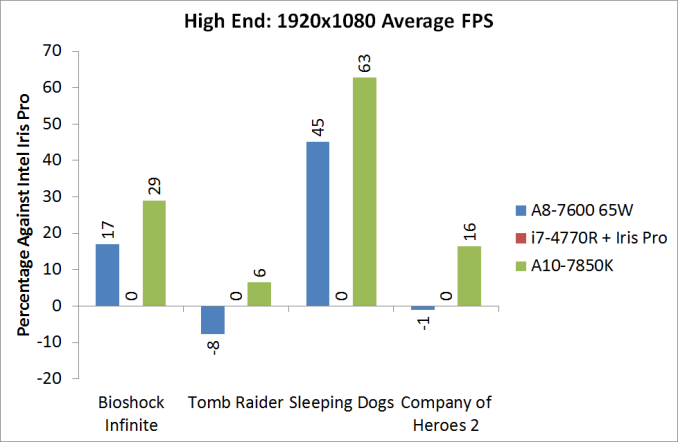








380 Comments
View All Comments
dbcoopernz - Tuesday, January 14, 2014 - link
I'd like an APU with enough GPU power to run all the high quality options in MadVR. Would make a very nice HTPC chip.thomascheng - Tuesday, January 14, 2014 - link
I think Mantle can make that happen, but will see how much support they get.MrSpadge - Tuesday, January 14, 2014 - link
Mantle has nothing to do with GP-GPU, that's not using DirectX anyway.JDG1980 - Tuesday, January 14, 2014 - link
My discrete 7750 couldn't handle Jinc scaling in MadVR (at least not without dropping frames on some 1080i test clips), so this is going to be another generation or two in the future.The PS4 APU could probably do it, if that was available in a generic PC form factor.
MrSpadge - Tuesday, January 14, 2014 - link
Add to that DDR4 and/or 4 memory channels, or at least a large on-package buffer like Crystal Well.yankeeDDL - Wednesday, January 15, 2014 - link
But the whole point of HSA is to get the GPU to do CPU work that it could do better (like FP).So you wouldn't need more CPU cores at all.
Look at it this way: AMD's CPU is less efficient than Intel's, while the GPU is more efficient.
Having a CPU-imbalanced APU, would put it in a tough(er) spot to compete against Intel. A GPU imbalanced, as Kaveri is, would improve the lead than it already has on the GPU side.
Now imagine that HSA kicks in, and the GPU lead translates directly in CPU lead ...
mikato - Wednesday, January 15, 2014 - link
This is true. I hope we see more articles as adoption of HSA starts to take hold.It is too bad they are far behind in CPU power, but AMD has the right strategy. Either way, some things are better done on the GPU. AMD just has more benefit than Intel to get things moving that way sooner with their GPU advantage and CPU disadvantage. Intel will have no choice but to follow that lead.
nissangtr786 - Tuesday, January 14, 2014 - link
http://www.extremetech.com/computing/174632-amd-ka...hsa does well on amd main thing they marketed in libreoffice.
Ryan Smith - Tuesday, January 14, 2014 - link
I'm normally not one to speak about other articles, but those are all OpenCL benchmarks. The OpenCL HSA driver won't be released for another quarter. And the HSA SDK is similarly far off.http://www.anandtech.com/show/7677/amd-kaveri-revi...
krumme - Tuesday, January 14, 2014 - link
What a bencmark of a review. I learned a lot. Great. Thanx.